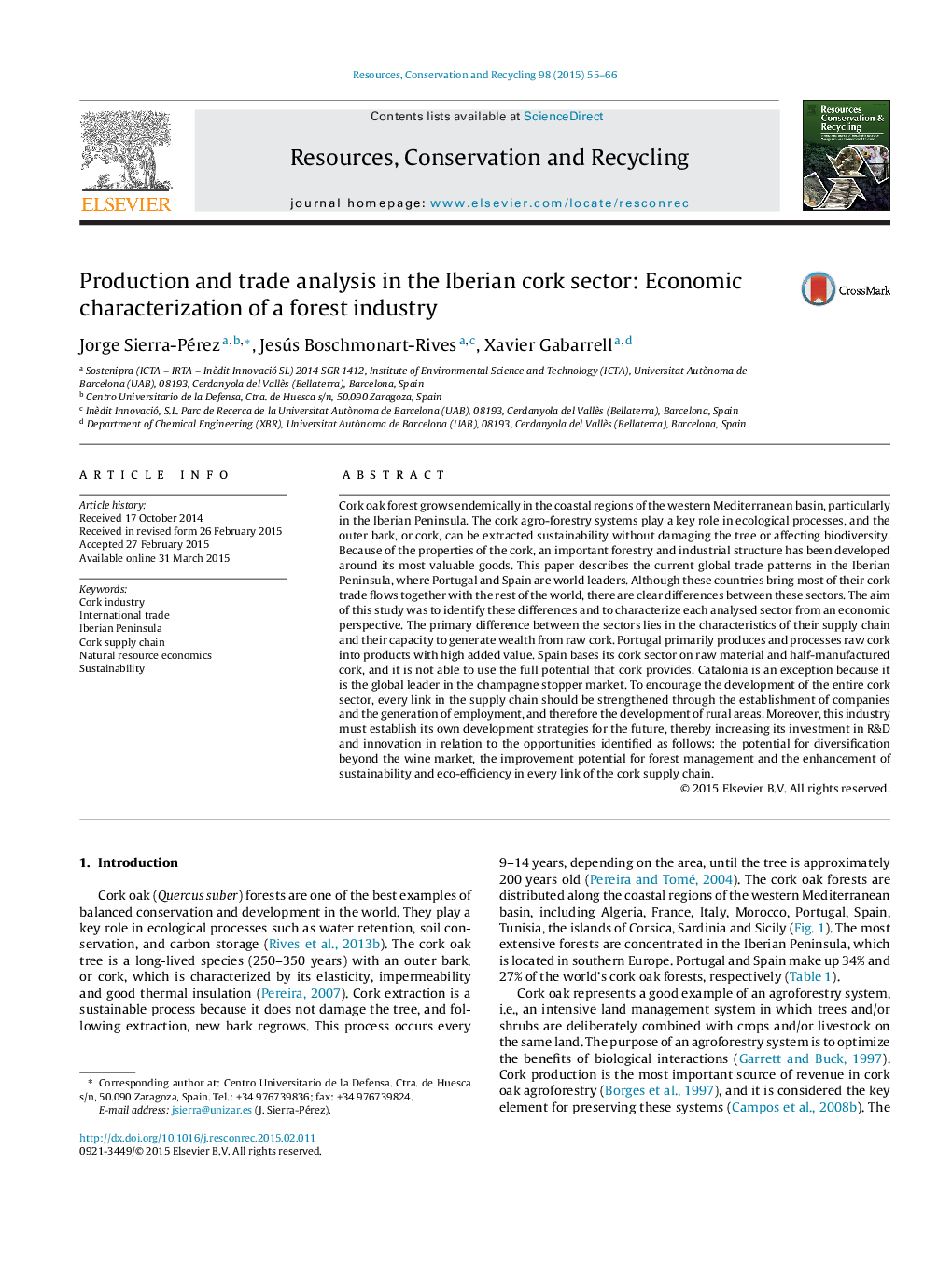| Article ID | Journal | Published Year | Pages | File Type |
|---|---|---|---|---|
| 1062929 | Resources, Conservation and Recycling | 2015 | 12 Pages |
•Characterization of the Iberian cork sector in structural, economic and trade terms.•Portugal and Catalonia are mainly manufacturers of high-value cork products.•Rest of Spain wastes the potential of its raw cork exporting it to other markets.•Cork industry should implement R&D and innovation strategies for diversification.•Cork supply chain should strengthen sustainability and ecoefficiency at all stages.
Cork oak forest grows endemically in the coastal regions of the western Mediterranean basin, particularly in the Iberian Peninsula. The cork agro-forestry systems play a key role in ecological processes, and the outer bark, or cork, can be extracted sustainability without damaging the tree or affecting biodiversity. Because of the properties of the cork, an important forestry and industrial structure has been developed around its most valuable goods. This paper describes the current global trade patterns in the Iberian Peninsula, where Portugal and Spain are world leaders. Although these countries bring most of their cork trade flows together with the rest of the world, there are clear differences between these sectors. The aim of this study was to identify these differences and to characterize each analysed sector from an economic perspective. The primary difference between the sectors lies in the characteristics of their supply chain and their capacity to generate wealth from raw cork. Portugal primarily produces and processes raw cork into products with high added value. Spain bases its cork sector on raw material and half-manufactured cork, and it is not able to use the full potential that cork provides. Catalonia is an exception because it is the global leader in the champagne stopper market. To encourage the development of the entire cork sector, every link in the supply chain should be strengthened through the establishment of companies and the generation of employment, and therefore the development of rural areas. Moreover, this industry must establish its own development strategies for the future, thereby increasing its investment in R&D and innovation in relation to the opportunities identified as follows: the potential for diversification beyond the wine market, the improvement potential for forest management and the enhancement of sustainability and eco-efficiency in every link of the cork supply chain.
